#american made automobiles
Explore tagged Tumblr posts
Text
1954 Ford Customline Ranch Wagon~Rachel Holbert Jones
1954 Ford Customline Ranch Wagon~Rachel Holbert Jones

View On WordPress
#1954 ford ranch wagon#american made automobiles#american made performance#blogger#blogspot#boondocking#car camping#car life#carlife#classic car museums#classic cars#clifton tn rv park and marina#diverse wickedly crazed diary#facebook#haunted abandoned carolinas#hubpages#instagram#linkedin#livejournal#living in a car#living off grid#medium#memphis tn#muscle cars#nomad lifestyle#nomadlifestyle#old cars#old ford#oldford#personal blog page
0 notes
Text
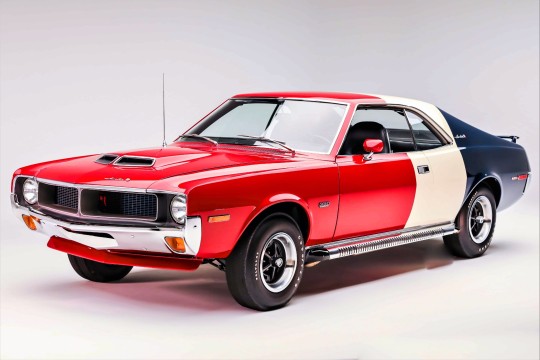
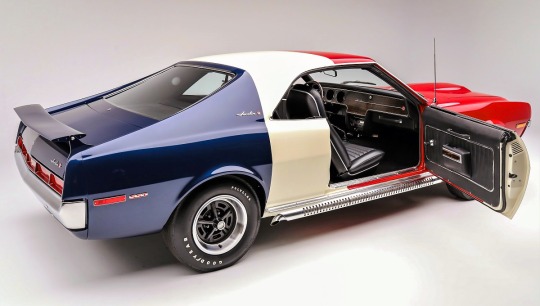
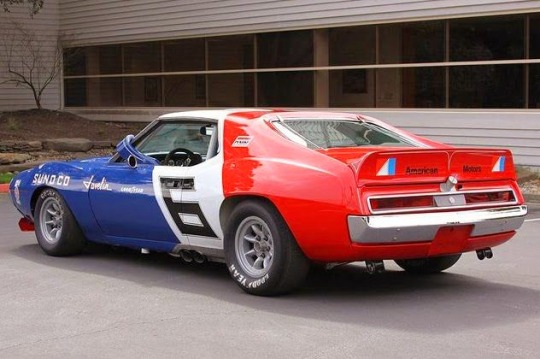
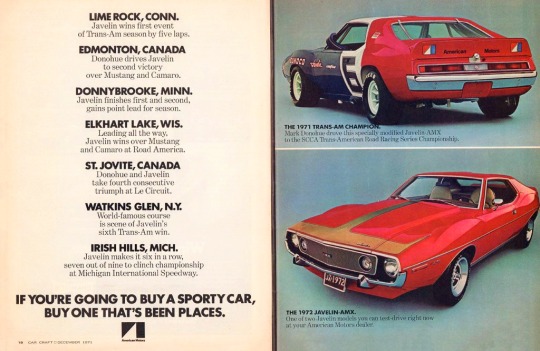
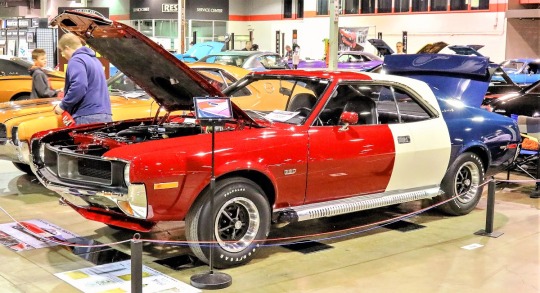
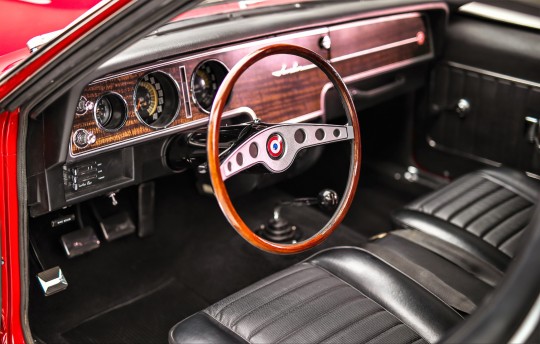
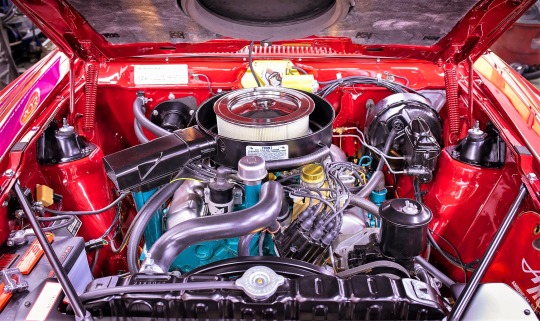
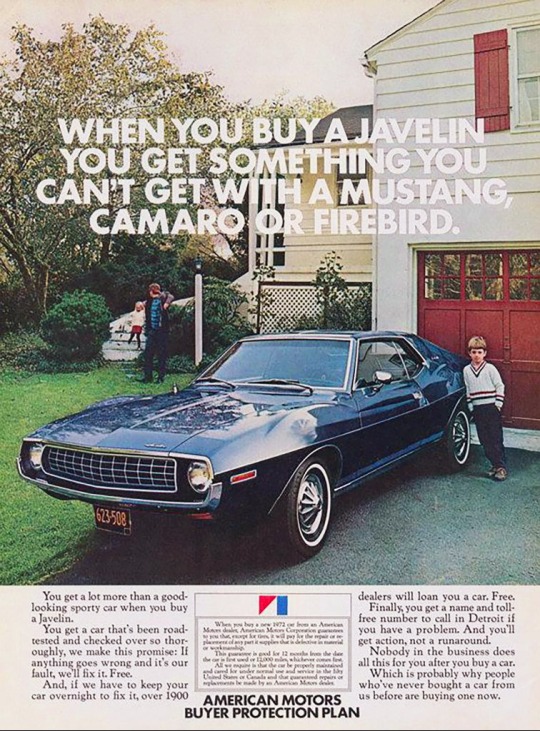
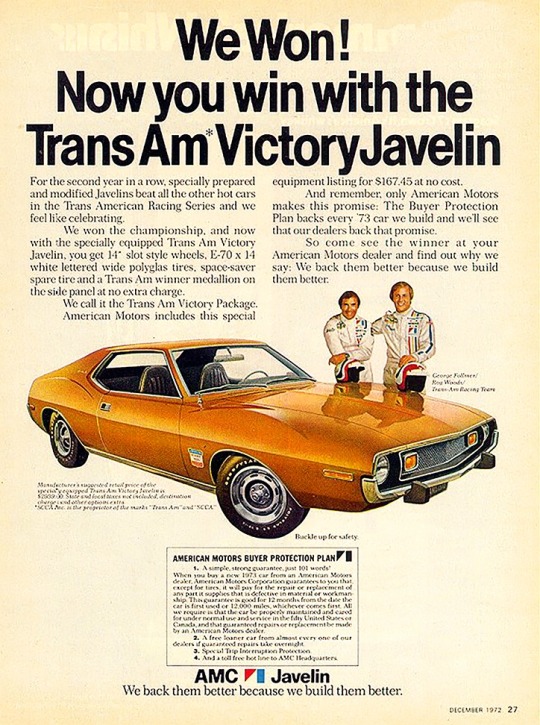

🇺🇲 Step back in time and experience the roar of the iconic AMC Javelin, a true legend of American muscle cars! Introduced in 1967 by American Motors Corporation (AMC), the Javelin was a front-engine, rear-wheel-drive, two-door hardtop automobile manufactured across two generations, spanning from 1968 through 1970 and then from 1971 through 1974 model years. It was designed to compete in the pony car market segment against rivals like the Ford Mustang and Chevrolet Camaro.
🚗💨 The AMC Javelin burst onto the scene in 1968, showcasing a sleek design and powerful engines. Styled by Dick Teague, the Javelin offered a range of trim and engine levels, from economical pony car variants to high-performance muscle car models. Its distinctive appearance, featuring a long hood and aggressive stance, turned heads on the streets and racetracks alike.
🏭 Besides being manufactured in Kenosha, Wisconsin, Javelins were also assembled under license in Germany, Mexico, the Philippines, Venezuela, and Australia, showcasing its global reach. American Motors even offered discounts to U.S. military personnel, leading to many Javelins being exported overseas.
🛞 Under the hood, the Javelin packed serious power. It was available with inline-six engines or potent V8s, delivering thrilling acceleration and speed. The AMX variant, equipped with a 6.4-liter V8, boasted over 300 horsepower!
🏆 The AMC Javelin wasn't just about looks—it excelled on the track too. It competed in Trans-Am racing, demonstrating its speed and agility. In fact, the second-generation AMX variant was the first pony car used as a standard vehicle for highway police car duties by an American law enforcement agency. Today, the Javelin's unique style and racing heritage make it a sought-after classic among collectors.
💔 By 1974, the automobile landscape had shifted. While other manufacturers downsized engines in response to changing market demands and fuel shortages, the Javelin's big engine option continued until production ceased in November 1974 amidst the Arab oil embargo and declining interest in high-performance vehicles.
🦅 The AMC Javelin embodies the spirit of American muscle cars, blending style, performance, and affordability. It's a timeless classic that continues to capture the hearts of car enthusiasts everywhere. Get ready to hit the road and experience the thrill of the AMC Javelin!
#brits and yanks on wheels#retro cars#transatlantic torque#vehicle#cars#old cars#brands#companies#automobile#american cars#amc#american motors#american muscle#amc javelin#javelin#muscle car#pony car#race car#trans am#old car#classic cars#car#american auto#automotive#chevrolet camaro#chrysler#wisconsin#kenosha#made in usa#ford mustang
297 notes
·
View notes
Note
Oh to be Maverick, reading AD magazine and has a husband that will write you a blank check to buy any decor you want. Or collects expensive watches. And has the same taste. I don't know if anyone have asked this, what is your hc about their car preference? I hc that Mav likes big car because he's relatively short. And Ice likes luxury car. What do you think?
oh my god i have had this headcanon for so long thank god someone’s asking about it.
Ice will ONLY drive American-manufactured cars. like even when he travels somewhere and rents one. he will raise a stink about it.
It is a significant point of contention in their relationship & marriage that maverick is only interested in Japanese-manufactured motorcycles. Like they have had, and will continue to have, shouting matches over “why can’t you be a patriot and buy American motorcycles like harleys??!? What is with all the kawasaki and yamaha crap???” and “ice im telling you they just run better!!! the japanese just make better bikes!!!” tongue-in-cheek threats of divorce etc.
i definitely think of ice as less a luxury car and more a classic muscle car guy. back when muscle cars still were delicate and beautiful instead of hard and sharp, if that makes sense. there is a Venn diagram of luxury and muscle cars and he definitely has dabbled in the middle (see my fic’s deepthroating of the 2005 ford GT). But he won’t cross the line. (Won’t be caught dead driving a Porsche or mercedes for instance)
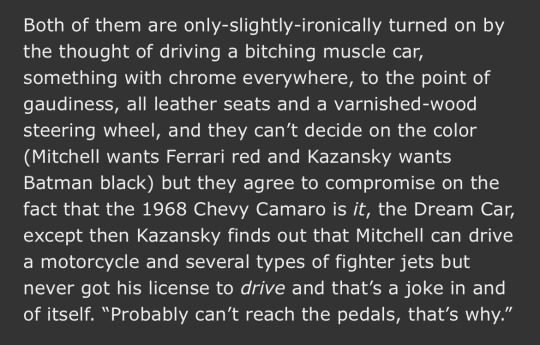
in the final final draft of my fic (ie the draft that will get posted before i call it quits on my top gun phase) the Dream Car is getting changed to a ‘68 Plymouth HEMI roadrunner. camaro is too mainstream i will admit. but see above for my “car preferences” hc.
#when maverick does finally get his license ice says he’ll pay for 60% of the car mav wants so long as it is American made#okay sooo if i said i wanted a jeep…?#ice (narrowed eyes): i would support that but you’re on thin ice#Mav just wants off-roading capability#not because he’s a big off-roader but just because ‘what if someday we need to go off roading?’#pete maverick mitchell#tom iceman kazansky#icemav#top gun#asks#edts notes#2005 ford gt is beyond sexy#also completely out of the price range of even a 2-star admiral so very unrealistic I have to admit#nah. interested in the LP American marques (Chevy ford Plymouth)#the holy trinity of 60s cars#can we not bring back 60s automobile frames but safe and make them electric? i pray for that every night#headcanons ive had for over a year now. time passes.
88 notes
·
View notes
Text
youtube
#classic wheels tv#autos and vehicles#autos#automobile#technology#best cars#junkyard#abandoned cars in forgotten junkyard#abandoned cars in america#abandoned junkyard cars#abandoned cars#classic cars#abandoned cars america#abandoned cars in the woods#cars#mexican made amc 1979 vam american junkyard find#abandoned cars in usa#junkyard finds#rare oddball mexican made 1979 vam american junkyard find#best junkyard cars#american pickers#rarest cars#Youtube
0 notes
Text
Has American Vehicle Manufacturers lost pride in what they’re producing? It seems like they’ve forgotten the meaning of quality control and making a good product for their customer. On the other side foreign car makers like Honda, Toyota and others ensure they’re putting out a quality vehicle. So let’s talk about it, are AMERICAN CARS JUNK
youtube
View On WordPress
#AMERICAN CARS ARE JUNK BUY FOREIGN NOW#american made#American Vehicle Manufacturers#audi#automobiles#automotive#Biker News#bikers#bmw#car#car companies#car rally#cars#chevy#don&039;t do this#ford#foreign cars#harley davidson#honda#how to#insane throttle#junk#junkyard#mercedes#motorcycle rally#motorcycles#omg#racing#say what#toyota
0 notes
Text
USA-Made Premium & Wholesale Automobiles | C&D, Avenue, JK, German Engineering.
Introduction: In the dynamic world of automobiles, the United States and Germany stand out as key players, offering unique perspectives to the industry. From luxurious premium vehicles to versatile wholesale options, these nations paint a diverse picture on the canvas of the automotive landscape. This article embarks on a comprehensive exploration of premium, wholesale, and specialized…

View On WordPress
#Avenue#JK Automobiles American automotive diversity German precision engineering Luxury car experience Innovative vehicle technology Automotive ind#Premium American-made vehicles German luxury automobiles Wholesale car market Specialized vehicle models C&D
0 notes
Text

1967 Ford Galaxie 500
Ford Galaxie 500 (1967): A Timeless Classic
Wow! This iconic beauty is a 1967 Ford Galaxie 500. Its sleek lines, powerful engines, and luxurious interior have made it a beloved American classic. Let's dive into 10 amazing stories that have shaped this legendary car:
1. Full-Size Sedan Elegance: The Galaxie 500 offered a spacious and luxurious interior, making it a popular choice for families and executives.
2. Performance Options: The Galaxie 500 was available with a variety of powerful engines, including the 428 cubic inch Cobra Jet V8, offering thrilling performance.
3. Cultural Icon: The Galaxie 500 has appeared in countless movies, TV shows, and music videos, cementing its status as a cultural icon.
4. Racing Success: The Galaxie 500 proved its performance capabilities on the racetrack, competing in various racing series.
5. Collector's Item: Due to its popularity and historical significance, the Galaxie 500 has become a highly sought-after collector's car.
6. Modern-Day Appreciation: The Galaxie 500's classic appeal continues to captivate car enthusiasts, with many seeking out these vintage vehicles for their timeless style and character.
7. Community and Passion: The Galaxie 500 has a dedicated community of enthusiasts who share their love for this iconic car through forums, social media, and car shows.
8. Timeless Design: The Galaxie 500's classic styling has aged gracefully, making it as desirable today as it was in 1967.
9. Driving Experience: The Galaxie 500 offers a comfortable and enjoyable driving experience, with its powerful engines and luxurious interior.
10. Iconic American Automobile: The Galaxie 500 is considered one of the most iconic American cars of its era, known for its reliability, performance, and style.
806 notes
·
View notes
Text
REVIEW
Gatsby: An American Myth (Welch, Chavkin, Bartlett, Majok, & Tayeh; American Repertory Theater)
Something that most adaptations of Gatsby get wrong, whether film or stage, is the treatment of characters as archetypes rather than individuals. Symbolism drowns out most genuine attempts at capturing emotional connections and conflicts of personality. They forget that this story is not only a failure of the so-called American Dream; first and foremost, it’s a tragedy of failed roles and relationships. Almost every one of the players is attempting to be someone they are not, and even as they reach for what they believe they should want, they reveal with increasing fervor what they actually want. This is the heart of what makes Welch’s new adaptation so devastatingly, disarmingly unique, so true to its source.
The set design is literal wreckage. Crushed and warped automobile chassis scaffold the moving staircases, and concealed trap doors. The backdrop shows no clear incorporation of the infamous Eckleburg billboard; rather, it is made up of a dotted grid resembling headlights. These play out effects ranging from a downpour to camera flashes to, briefly and only once, a pair of eyes that make no effort to hide behind the owlish frames of glasses. The only thing infusing this jagged framework with meaning is the people who move through it.
The lighting design works with the set’s incongruences, deepening or excavating shadows as needed. The brightness, when it flares, is blinding. Jewel tones either enhance or diminish a costuming scheme that is composed of either very pale or very dark shades, no in between. And whether it’s the post-apocalyptic black and gray cabaret garb of the ensemble or the wealthy protagonists’ pale suits or the gunmetal and gray denizens of the wasteland, everyone’s trouser and skirt hems are conspicuously rimed with reddish dust. The visual effects are nearly impossible to describe without sounding like I had some kind of desperate fever dream.
So far, I realize that these descriptions of the set and lighting design sound like this production is about to fall into the trap of overplaying symbolism, but please bear with me. With all of that established, I can focus on what’s truly extraordinary here, what’s meant to and does shine unhindered. The acting, musicianship and vocals are all so precise that it was hard for me to believe this show is still in previews. It feels Broadway ready, West End ready, major international tours ready. If I was the production crew, I’d turn this loose on a massive scale from the get-go without a second thought.
Much like with Hadestown, the musicians are not down in an orchestra pit. They’re characters in their own right, present on the stage from start to finish on tiered risers that run up from the center on each side from one of the catwalks. I’m sure Chavkin’s involvement as director has everything to do with why this show feels so much like, moves so much like Hadestown. The company is on an equally small scale, about 23 - 25 people including the principals.
Costuming among the ensemble is delightfully gender agnostic. I mention a cabaret aesthetic earlier in this review, and I’m not kidding. If you had shown me the ensemble costume designs without showing me the principals’ designs, I would have assumed I was looking at a Cabaret revival. They’re the most talented dancers I’ve seen occupy one stage in more than a decade. The choreography relies on movements in eerie unison for a significant portion of the show, but not without allowance for individual flair within those constraints. The guy sitting next to me, when I spoke to him at the intermission, said he works as a choreographer in regional theater, and he’d never seen anything like this. I couldn’t agree more; the dancing is singular, and as impressive as the musicianship is, the dancing and unusual body movement are maybe the greatest achievements of this show on the living, breathing end of things. I could have watched the dancers for those three hours without any dialogue or vocal intervention and still understood the story. That takes so much fucking doing.
As for the principal cast, they’re constantly among the ensemble; when I say these are all triple threats in the purest sense of that terminology, I really mean it. You always expect a few of the principals to be less dance and movement focused, more polished on the acting and singing side, but this show gives you terrifying proficiency from every angle. Even the guy playing Meyer Wolfsheim is at the center of what I think is the most memorable dance number in the piece. I’ve just never seen such versatile principals all in one production. What’s even more extraordinary is that I had never heard of or previously seen any of them, and that takes some doing given how much live theater I’ve consumed in several decades of life.
Ironically, the musical composition is the one aspect of this production on which I’ll be spending the least time. I need not tell you why Welch and Bartlett were perfect for this job. They understood the assignment, and then some. There’s not a single weak number among the track listings, and I desperately hope they release a recording soon. The standout numbers all have something in common: they showcase Soleia Pfeiffer as Myrtle Wilson. You can tell that’s the role where Welch sank most of the sound that’s considered her signature style. I don’t even need to describe it; you already know what I’m talking about. What’s impressive otherwise is the restraint, the lack of over-reliance on that signature style.
The principals are fucking perfect. I’ve kept this review tautly professional without meaning to thus far, but from here on out is where I start bleeding feels all over the post. If you don’t already know who my blorbos are due to my writing history with a Gatsby-related novel (The Pursued and the Pursuing, 2021), you’re going to know by the time you’re done reading this. You’re going to know exactly who I love and why, who I hate and why, who I ship and why. But you’ll also know that I approach all three of those elements from a place of enjoying every moment of those characters, even the ones I hate. Nobody’s performance put me off or struck the wrong tone when taken in context of the novel and how the tragedy of how their relationships play out.
For a long time, I’ve been saying that there are certain support roles, certain sidekicks, that make or break the higher-profile person to whose side they’re stuck, ride or die, until the bitter end. Horatio is a great example that I’ve ranted about before; if your Hamlet production has a lackluster Horatio, then it doesn’t matter how good the Hamlet is. You have nothing if you don’t have the binary star system at the heart of that harrowing universe. I’ve seen other adaptations of Gatsby consistently fall apart because Nick Carraway is treated like the kind of voyeur who doesn’t matter, the kind of voyeur who serves as the audience’s eyes and ears, and nothing else. Anyway, this is all to say: Ben Levi Ross as Nick might be the most compelling argument I can make for the fact that the creative team behind this show understood the assignment. He’s awkward, warm, sincere, and reactive in all of the ways you need Nick to be. He’s not a passive observer; he’s in the middle of everything, and he knows it. There’s a self-deprecating response he makes when one character, Jordan if I’m not mistaken, quips that maybe he’s the reason for Gatsby’s parties for all he knows. “Maybe I am,” he says, and the tongue-in-cheekness belies a gutting meta-sincerity. We believe Daisy is the point, Gatsby believes Daisy is the point, but what’s borne out every breathtaking moment of this production is that Nick is the point. He always was. He’s also given his due as a gay man in context of the story for the first time ever. I might make some folks mad when I say Nick has always been gay; I’m going to point you to Myrtle’s apartment party and the hookup with Mr. McKee as textual evidence in the novel. The kiss with McKee, the hookup with McKee, is unapologetically here. His lack of belonging everywhere else he’s ever been, because he is gay, is unapologetically here. One of the most memorable numbers in the show hinges on the hope feels at being able to be himself in New York. Queer fans of Gatsby have been waiting a long time for this. Anyone who’s read the text closely and understood him has been waiting a long time for this. I’ve been waiting several decades as a reader, and I would’ve waited forever to have Nick so fully, lovingly realized.
One of the other things that Gatsby adaptations have persistently gotten wrong is the titular character himself. The invention of Jay Gatsby hides the underlying James Gatz, makes it feel as if that old self is truly subsumed, as if it never mattered. But Isaac Powell gives us a Jay who’s exactly as he should be, who can’t hide beneath his own attempt at artifice and reinvention worth a goddamn. He’s young (as young as Nick; they’re 32 and 30 respectively both in the novel and here), painfully earnest, and just barely keeping a handle on the criminal shit he’s had to do in order to get where he is. When he says old sport to Nick, it’s not an affectation; when he says it to Tom, it becomes a biting insult. This is a Jay who knows where and why he’s vulnerable; he latches onto Nick like a not because he sees a man close to Daisy that he can exploit, but because he sees another young man who’s equally vulnerable, equally an outsider, equally haunted by the things they had to do in the war. From the moment they meet, they are almost always touching—a hand on the shoulder, on the back, getting in social harm’s way for each other, eyes seeking each other without cease in the most crowded of settings. When Jay takes Nick to lunch to meet Wolfsheim (who has in this production taken on the function of Dan Cody as well), it’s not to have somebody else vouch for the artifice of who Jay Gatsby is. It’s taking Nick to meet his fucking father-figure, and all of the messy, sincere “if you hurt my boy, I’ll kill you” sentiment that Wolfsheim aims at Nick was the moment I knew just how much the Nick’s loss by the end was going to hurt. Jay’s love for Daisy is a ghost of itself, even if as painfully earnest as everything else about him. Meanwhile, his attachment to Nick is so disarmingly genuine from the start that you understand the true tragedy you’re about to watch untold: these men who need each other, maybe even were made for each other, each prove unable to step outside their parallel distractions from what they truly are to each other. Jay’s interactions with Daisy and Nick’s interactions with several male and/or gender ambiguous members of the ensemble have something in common, which is a shocking level of physicality. This show had an intimacy coordinator; that’s the level of no holds barred we’re talking about. When you look at Tom and Myrtle, you can see why that was merited, too.
Speaking of Tom (Cory Jeacoma), the treatment of him here is every bit as scary as it should be. There’s no attempt to make him palatable, unlike what I’ve seen done with him in other adaptations. He towers over everyone else in the cast, I mean everyone, to a physical degree that’s uncomfortable. The way his wife, lover, and friends all flinch when he gets too close to them speaks volumes to the fact that he’s an abuser in every sense of the term. Even Nick, the prodigal college friend from Yale, is on eggshells around him (which, by the hotel blowup at the end of the show, becomes a sneering, reckless contempt, one of the driving forces that drives Nick to put himself between Jay and Tom whenever real harm is on the table). At the same time, this is a Tom who sincerely loves his wife and was only ever using Myrtle as a fling. You can tell he never meant any of the promises he made Myrtle. When Daisy tells him she didn’t stop the car on purpose, it’s as if his wife’s unapologetic act of manslaughter (“It was her or me!”) is the thing that wins him back. They aren’t careless people; they are people who consciously choose, day in and day out, to use others until they’re bored or done with them. The ruthlessness of Tom and Daisy as a couple is impressive, played up to a level that I feel more adaptations should do without fear of exaggerating the text.
As mentioned above, Daisy (Charlotte MacInnes) is no delicate, nervous creature who can’t help her actions under duress. She knows what she’s doing every bit as much as Tom knows what he’s doing. They use people, hurt people because they get bored and restless and enjoy it. I respect a Daisy who’s in control of her actions every step of the way even if I don’t like her; it’s better than trying to depict her as weak and at the mercy of the men around her. She’s a pragmatist and a survivor. So many of her songs are about choices and being conscious of those choices. She is a person you should fear every bit as much as you fear her husband, and even Jordan knows she’s not safe in Daisy’s orbit.
As Jordan, Eleri Ward is one of the neatest personalities on stage. Like Tom, she’s noticeably taller than most, which gives her a commanding physical presence. She has no romantic interest in anyone; I fucking love that this production show her and Nick bonding on the basis of being queer and tired of everyone else’s shit. This is a more likable, relatable Jordan than I’ve seen in the past. This is a Jordan whose relationship to Gatsby is much more familiar and warm, much more akin to the friendship she forms with Nick. In fact, the queer-and-tired vibes that roll off several of the principals in this production are palpable.
Myrtle and Wilson (Matthew Amira) aren’t always played as effective foils for Daisy and Tom, but here? They unquestionably are. They do actually love each other in spite of the things they’ve done to hurt each other, and it’s a constant dance of daring each other, challenging each other. The most memorable duet in the entire show is between them, during Act II. The confrontation is positively electric. These are two people with deep, complicated history. Of all the couples in the show, they feel the most real, the most alive. It makes the loss of Myrtle so much more wrenching; she’s not just a plot device emblematic of the bad choices they’ve all been making. She’s not shallow or frivolous or anything like that. She’s a shrewd woman with complex motivations, and for the first time ever I find myself loving her and caring what happens to her. She’s thrust even further into the action in that one of her part time gigs is working as a maid at Gatsby’s parties, a conceit that works shockingly well and hastens the devastating consequences of her affair with Tom.
I’ve made mention of Meyer Wolfsheim’s (Adam Grupper) uniquely enhanced role previously, so I’d be remiss if I didn’t comment on him again. This is a man who does, in fact, seem to give a shit about Jay above and beyond using him as a tool in his criminal empire. It’s not necessarily a healthy father-son dynamic, but Wolfsheim is usually played as ruthless, opportunistic, inhumanly calculating. Here, he’s a charming, but unquestionably dangerous man moved by a young soldier’s plight. He seems conflicted between his love for Jay and his need to have Jay continue to hold the party line within their business relationship. Wolfsheim is deeply conflicted about Jay in a way that I haven’t seen any Wolfsheim be played previously. And, as I mentioned earlier, the actor has a showstopper of a song and dance number. That may be the #1 “I wasn’t expecting that, but I’ll take it!” moment for me in this show. And I say “may be” only because the moment that truly stopped my heart, will stay with me until everything else fades from memory, is perhaps only understandable in the context of my engagement with the text of Gatsby as a writer of transformative works.
Daisy’s and Tom’s daughter, Pam Buchanan doesn’t always appear in adaptations because she’s a toddler. Even in the novel, she a throwaway mention plus a single scene near the end where the nanny brings her out to meet Jay and Nick. She’s most often left as a throwaway mention without even grave of the scene where she appears. The scene in the novel, however brief, is memorable—and has been captured in all its fragile beauty for the first time in this adaptation. Jay and Nick both pay bewildered, wondering attention to this kid when she’s brought out. Jay drops to his knees and takes her hand when she greets him while Nick looks on in a moment of singular focus on both of them. The child who plays Pam here has a spark, an expressiveness that made me choke up even though she’s only on stage for a few minutes, if that. The tableau is one in which you can feel the shock of reality, however brief, touch on these men—Daisy’s and Tom’s reckless actions may yet do harm to someone who’s barely even begun to live her life, but who is just conscious enough to be a participant in it. They recognize that they, like this child, are probably in for a word of ruin—and that they have let it go on for so long that there’s now nothing they can do about it. For me, the deepest tragedy was watching Nick and Jay throw off that moment of heartbroken, horrified recognition prompted by Pam and return to the parts they’d decided to play out until the moment one of their hearts stopped.
Speaking of grief, of Nick’s grief since he’s the one who loses so much: there is only one person who loses more, and that’s Mr. Gatz, Jay’s father. They preserve his arrival at the house when Nick is the only person who stays around to carry out Jay’s funeral and burial. And when he arrives, the visceral shock of seeing his dark skin, braids, and beaded elements of Native regalia in juxtaposition with his otherwise period-typical Western garb underscore the tragedy of what young Jay was running away from, of what he never quite succeeded in erasing from himself. The burial scene shows Nick reverently bringing several of Jay’s folded shirts from the house and handing them down into the grave to Mr. Gatz, who places them reverently as possessions to accompany his son into thereafter. The cultural ramifications are all at once understated and devastating. Nick has moments with each of Jay’s father figures that are among the most complex and moving in the show. The program does not make clear the name of the ensemble member who takes on this most memorable of all Mr. Gatz appearances, and this erasure in and of itself is both unfortunate and telling. This is a world that never belonged to the majority of those who inhabit it, and Nick realizes it with heartbroken clarity after having this final interaction. Even though he’s an outsider, he’s part of a world that has erased and betrayed the man he loved so much at every turn.
The closing number, “We Beat On,” felt like it needed something more, but it utilized the final line of the novel to a deeply moving effect. The lights go down suddenly as the last word is sung; it feels like the song is half finished. When the lights came up, Nick and Jay were center stage in each other’s embrace, just withdrawing from each other as the entire company transitioned into final bows. That’s how I’ll remember them, always: touching even when they’ve already lost each other, borne ceaselessly back into each other’s arms. If Nick is Orpheus, then I have no doubt that he, too, will tell this story again and again until someday, somewhere, something gives.
598 notes
·
View notes
Text
Midnight Pals: Dark Days Coming
King: hey guys sorry i'm late King: i just could not get up this morning King: feels like I've been sleeping for days King: what did i miss? King: how did the election go? Lovecraft: not too bad King: King: oh no King: oh no oh no oh no
Lovecraft: don't worry steve it won't be so bad Lovecraft: I've heard assurances from the new regime that they only want the trade unionists King: King: King:
Lovecraft: i mean really steve Lovecraft: how bad could it be? [meanwhile] Donald Trump: we're gonna have the biggliest boot stamping on a human face forever Trump: we love the boot stamping on the human face forever, don't we folks? Trump: more and more people are saying they love the boot
Lovecraft: you're overreacting steve Lovecraft: what's trump even going to do? King: well i'm glad you asked King: [unrolls comically long scroll] Lovecraft: oh is this going to be a song
King: well for starters King: decimate reproductive rights King: LGBTQ rights King: labor rights King: civil rights King: accelerate climate change Lovecraft: [sweats] this is making me feel bad steve Lovecraft: i can't wait for trump to outlaw you telling me this stuff!
King: use the military to brutalize americans King: abandon Ukraine King: and as for gaza George Romero: in all honesty steve Romero: that probably won't change much King: oh look! an optimist!
Lovecraft: ok but Lovecraft: has he actually SAID he's going to do any of that? King: yes Lovecraft: oh he was probably just lying Lovecraft: he lies a lot Poe: he does lie a lot
Lovecraft: i think you're overreacting, he's probably not gonna do all the stuff he says he's gonna do King: so you don't believe him? Lovecraft: nope! King: king: then what's his appeal? Lovecraft: well he's just so honest
Lovecraft: a real straight shooter Lovecraft: tells it like it is Lovecraft: says what he means King: King:
King: howard please tell me you didn't vote for trump did you? Lovecraft: [sweats] steve! please! Lovecraft: i'm only a loveable archie bunker style racist Lovecraft: i'm still 100% yang gang King: King: King: i picked a bad day to quit cocaine
King: i really need some cocaine King: edgar you know where i can get some cocaine don't you Poe: steve stay strong Poe: you don't need cocaine King: just one bump King: to get me through the next four years King: i mean few days King: no i mean four years
King: how about a beer? i was an alcoholic too you know King: maybe i'll take that up again King: this is good drinking weather Poe: steve no Poe: dean help me hold him back King: don't try to stop me! Poe: no steve! you've got so much to live for! King: yeah? like what? Poe: well Poe: you've got a loving family King: Joe is pretty great Koontz: and owen! King: King: yeah and owen is alright too i guess
King: yeah he's pretty good King: what the heck, i can say it King: i love owen too! Koontz: and there's naomi too King: whoa wait a second, i have THREE kids?? King: this just keeps getting better!
King: thanks guys i do feel a little better Poe: good, hold onto that Poe: cuz it's going to be a long four years Lovecraft: only four years? i thought we weren't gonna have to vote anymore! Poe: Poe: good drinking weather, huh?
Joyce Carol Oates: huh, i really don't see why the electorate would hate trans people unless they were persuaded by hate speech and fearmongering JK Rowling: well well well look at the fancccy pantsss rich author Rowling: with her out of touch fancccy ideasss about a pluralissstic sssociety! Rowling: with her fancccy german automobile! Oates: this car was made in Guatemala
Rowling: you're clearly too rich to underssstand the feelingsss of the common man Rowling: unlike me, a true daughter of the proletariat Rowling: i know all about the material needsss of the underclassss Rowling: anyway i'm going to insulate my Scottish castle with big bags of money
#midnight pals#the midnight society#midnight society#stephen king#edgar allan poe#hp lovecraft#dean koontz#jk rowling#joyce carol oates#george romero
273 notes
·
View notes
Text
An Incomplete List of 2024 Additions to the Merriam-Webster
bingo card noun … 2 slang : a list of possible, expected, or likely scenarios — usually used in the phrase on one's bingo card
bussin’ adjective, African American English slang : extremely good : excellent; especially : delicious, tasty
chef’s kiss noun : a gesture of satisfaction or approval made by kissing the fingertips of one hand and then spreading the fingers with an outward motion — often used interjectionally
cold open noun : a scene of a film or television episode that precedes the title sequence or opening credits and that typically takes place in medias res
cromulent adjective, informal + humorous : acceptable, satisfactory
doggo noun, slang : dog
doomscroll verb : to spend excessive time online scrolling (see scroll entry 2) through news or other content that makes one feel sad, anxious, angry, etc.
edgelord noun, slang : someone who makes wildly dark and exaggerated statements (as on an internet forum) with the intent of shocking others
jorts plural noun : shorts made of denim or jean : jean shorts
nerf verb 1 informal : to reduce the effectiveness of (something, such as a character, attribute, or weapon) in a video game; broadly : to make (something) less useful or effective 2 informal : to lightly bump (another car) in an automobile race
padawan noun, informal : a young person especially when regarded as naïve, inexperienced, etc.
rage quit verb : to suddenly stop participating or engaging in (something) in a fit of anger and frustration : to quit (something) in anger
rizz noun, slang : romantic appeal or charm
simp verb, informal : to show excessive devotion to or longing for someone or something
smashburger noun 1 : a hamburger patty that is pressed thin onto a heated pan or griddle at the start of cooking; also : a patty (as of beans or ground turkey) prepared similarly 2 : a sandwich featuring one or more such patties
#Words#Merriam-Webster#Dictionary#Linguistics#writing#Trivia time of year again everybody#Some of them are kinda late ngl
847 notes
·
View notes
Text
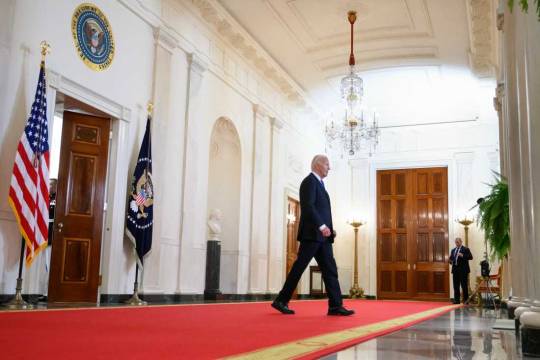
On the cliffs of Normandy, in a small holding area, the President of the United States was looking out at the English Channel. It was only six weeks ago, on the 80th anniversary of the D-Day landings, and President Biden had just finished his remarks at the American cemetery atop Omaha Beach. Guests had been congratulating him on the speech, but he didn't want to talk about himself. The moment was not about him; it was about the men who had fought and died there. "Today feels so large," he told me. "This may sound strange -- and I don't mean it to -- but when I was out there, I felt the honor of it, the sanctity of it. To speak for the American people, to speak over those graves, it's a profound thing." He turned from the view over the beaches and gestured back toward the war dead. "You want to do right by them, by the country."
Mr. Biden has spent a lifetime trying to do right by the nation, and he did so in the most epic of ways when he chose to end his campaign for re-election. His decision is one of the most remarkable acts of leadership in our history, an act of self-sacrifice that places him in the company of George Washington who also stepped away from the presidency. To put something ahead of one's immediate desires -- to give, rather than to try to take -- is perhaps the most difficult thing for any human being to do. And Mr. Biden has done just that.
To be clear: Mr. Biden is my friend, and it has been a privilege to help him when I can. Not because I am a Democrat -- I belong to neither party and have voted for both Democrats and Republicans -- but because I believe him to be a defender of the Constitution and a public servant of honor and of grace at a time when extreme forces threaten the nation. I do not agree with everything he has done or wanted to do in terms of policy. But I know him to be a good man, a patriot and a president who has met challenges all too similar to those Abraham Lincoln faced. Here is the story I believe history will tell of Joe Biden. With American democracy in an hour of maximum danger in Donald Trump's presidency, Mr. Biden stepped in the breach. He staved off an authoritarian threat at home, rallied the world against autocrats abroad, laid the foundations for decades of prosperity, managed the end of a once-in-a-century pandemic, successfully legislated on vital issues of climate and infrastructure and has conducted a presidency worthy of the greatest of his predecessors. History and fate brought him to the pinnacle in a late season in his life, and in the end, he respected fate -- and he respected the American people.
It is, of course, an incredibly difficult moment. Highs and lows, victories and defeats, joy and pain: It has been ever thus for Mr. Biden. In the distant autumn of 1972, he experienced the most exhilarating of hours -- election to the United States Senate at the age of 29. He was no scion; he earned it. The darkness fell: His wife and daughter were killed in an automobile accident that seriously injured his two sons, Beau and Hunter. But he endured, found purpose in the pain, became deeper, wiser, more empathetic. Through the decades, two presidential campaigns imploded, and in 2015 his son Beau, a lawyer and wonderfully promising young political figure, died of brain cancer after serving in Iraq.
Such tragedy would have broken many lesser men. Mr. Biden, however, never gave up, never gave in, never surrendered the hope that a fallen, frail and fallible world could be made better, stronger and more whole if people could summon just enough goodness and enough courage to build rather than tear down. Character, as the Greeks first taught us, is destiny, and Mr. Biden's character is both a mirror and a maker of his nation's. Like Franklin Roosevelt and Ronald Reagan, he is optimistic, resilient and kind, a steward of American greatness, a love of the great game of politics and, at heart, a hopeless romantic about the country that has given him so much.
Nothing bears out this point as well as his decision to let history happen in the 2024 election. Not matter how much people say that this was inevitable after the debate in Atlanta last month, there was nothing foreordained about an American President ending his political career for the sake of his country and his party. By surrendering the possibility of enduring in the seat of ultimate power, Mr. Biden has taught us a landmark lesson in patriotism, humility and wisdom.
Now the question comes to the rest of us. What will we the people do? We face the most significant of choices. Mr. Roosevelt framed the war whose dead Mr. Biden commemorated at Normandy in June as a battle between democracy and dictatorship. It is not too much to say that we, too, have what Mr. Roosevelt called a "rendezvous with destiny" at home and abroad. Mr. Biden has put country above self, the Constitution above personal ambition, the future of democracy above temporal gain. It is up to us to follow his lead.
-- "Joe Biden, My Friend and an American Hero" by Jon Meacham, New York Times, July 22, 2024.
#History#Presidents#Presidency#Joe Biden#President Biden#Biden Administration#Biden Withdrawal#2024 Election#Politics#Political History#Presidential Politics#Jon Meacham#New York Times#Democratic Party#2024 Presidential Election#Presidential Election#Presidential Campaign#2024 Democratic National Convention#DNC#Democratic National Convention#Presidential Candidates#Presidential History#ELECTIONS HAVE CONSEQUENCES#VOTE
195 notes
·
View notes
Text
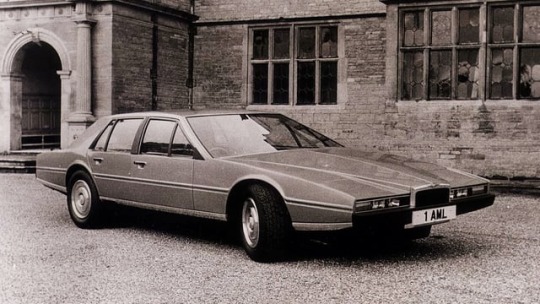
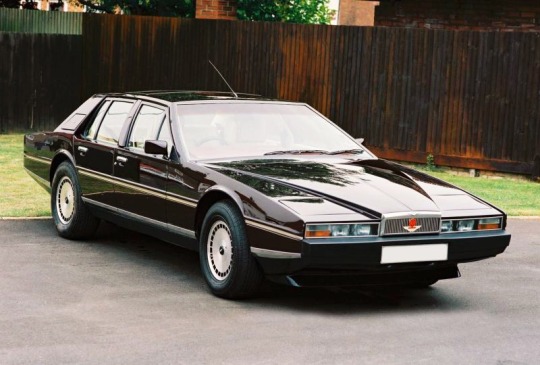

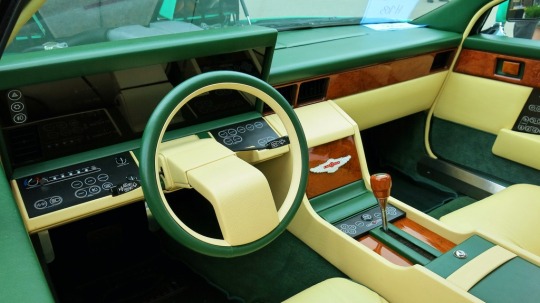

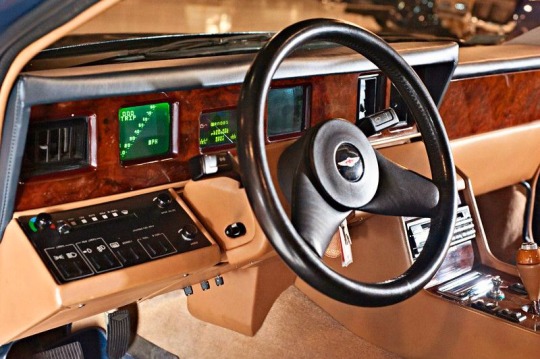
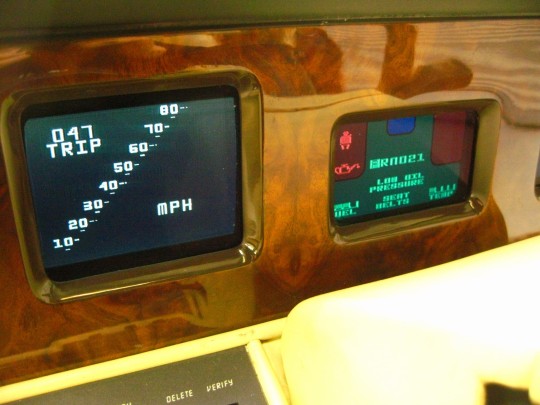
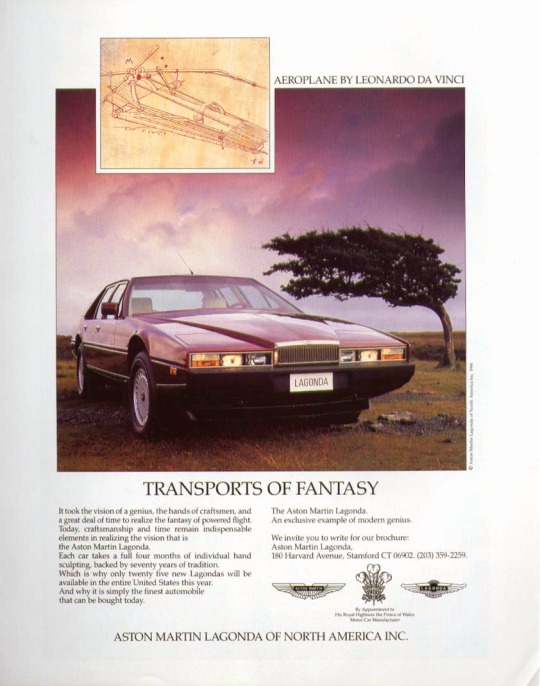


🇬🇧 Embark on a journey through the illustrious lineage of the Aston Martin Lagonda, spanning from 1976 to 1990, a testament to automotive luxury and innovation!
👑 Founded in 1913, Aston Martin has become synonymous with luxury, English elegance, and high-performance automobiles. In the early 1970s, it continued to push the boundaries of automotive design and engineering.
🚘 The Aston Martin Lagonda lineup of the late 1970s and 1980s exemplified the pinnacle of luxury automobiles, featuring sleek and sophisticated designs that set new standards for elegance and refinement.
🛞 Beneath their refined exteriors, the Lagonda boasted powerful V8 engines, delivering exhilarating performance and effortless cruising. Their spacious and sumptuously appointed interiors were outfitted with the latest amenities, including plush leather upholstery and polished wood trim.
💡 The Lagonda was known for its innovative use of electronic systems, including digital dashboard displays, onboard computers, and advanced climate control systems, setting new benchmarks for automotive technology and innovation.
💔 Despite critical acclaim and a loyal following, production of the Aston Martin Lagonda ultimately ceased in 1990. One of the key factors contributing to the discontinuation of the Lagonda series was the high cost of production and limited demand in the luxury car market.
#brits and yanks on wheels#transatlantic torque#retro cars#vehicle#cars#old cars#brands#companies#automobile#american cars#aston martin#aston martin lagonda#lagonda#old car#cool cars#classic cars#car#english cars#made in uk#made in england#luxury car#luxury cars#luxurycars#luxury#innovation#innovative#innovators#electronic#electronics#v8 engine
66 notes
·
View notes
Text
I keep seeing these Gen z is task force 141 and I wanna join
Anytime you use a computer, you do that stupid movie hacker trope of exaggerated typing and say "I'm in"
Saying "POV" in front of sentences
In the group chat saying "1 like and I'll kms", liking your own message and then saying "damn guess I gotta"
I see a lot of these posts were Gaz and Soap would understand y/n....bffr, no those geezers would not
No one knows what the gen z kid is saying they just know it's probably not good
"You're telling me a shrimp fried this rice?"
You have a small photo you keep tucked in your chest pocket and after enough times seeing you looking lovingly at it, one of the guys asks who it is. Is it a s/o from back home? 😏😏
You say no and pull out a photo card of your fave singer and they're like ??? Really
One time during a particularly physical scuffle with the enemy, you get thrown to the ground and huff out "one hop this time" only to promptly tackle tf outta your assailant while saying "take it back now yall"
Reads everyone's zodiac charts except ghost bc he won't tell his birthday let alone the time he was born so you just make one up
Price calls a 6 am meeting to which you say "double it and give to the next person"
*Alexa, play teenagers by MCR*
If you had time describe the base, you'd say it smells like ball sweat, blood and war crimes which everyone took offense to for different reasons
Would absolutely get soaps doodles tattooed
Actually speaking of which, imagine getting caught giving yourself stick and pokes with a pen and being banned from using pens period
You'd be in a meeting with a #2 pencil
Ofc a gen z member would be absolutely feral which very little regard for their own safety much to the dismay of the others
Quoting "Oh these aren't homemade, they were made in a factory....a bomb factory......they're bombs." All the time around soap even though he has no idea what you're talking about
You don't spent too much alone time with ghost bc he likes quiet and you can't be alone with your thoughts which is why you lean more towards spending time with soap or gaz
I just like puns so I'm gonna add this but gen z love borgs (a customized gallon jug of alcohol that is usually given a name) and yours is appropriately named taskforce 1-borg-1
this is mainly for my americans but i know pretty much the whole world got beef with engl*nd: before you met Soap, you thought the entire 141 was en*lish so when you finally did meet him, you said "oh thank god" with a sigh
americans 🤝 scotts
making fun of english "people"
"Pull up in the monster, automobile gangsta With a bad bitch that came fr-" "....sergeant, comms off please"
you show Ghost WAP and he has to take a walk
*price yelling at gaz and soap*: KYLE GARRICK AND JOHN MACTAVISH GET IN HERE- Y/n: oop not the government name
Another for my US baddies: if your'e ever arguing with any of the guys, the nail in the coffin would be "and it's called soccer"
"one more like and i'll-" "enough!"
you call Price "ms. girl" and he could not be more confused
someone asks "do you serve?" and u reply "yah, serve cunt"
when asked why you decided to join the military you said something like: "well i didnt think i'd live past 18 so when I did, i ended up here".....crickets from the rest of the team
"good thing we only have showers on base because i would have already taken a toaster bath by now"
ask Gaz "no bitches?🤨" one more time see what happens
price: the enemies have taken civvies hostage and blocked off all exits and entrances to the town-" y/n: "omg tea"
Also calling price "capt. Save-a-hoe"....I wanna be saaaavvveddd ;)
If you took a shot every time you said "rest in peace to all the soldiers that died in the service, I dive in her cervix", you'd be dead lmao
When asked if they like the military they'd say "it was either this or the psych ward so yah, I'll take it"
Quoting MPGIS constantly and no one even sort of knows what that is ("Crack. Is that what you smoke? You smoke crack?")
Some detainee being interrogated is spilling some nonsense, so you hit them with "oh brother this guy stinks!" And then with the butt of your gun
"Little bad trini bitch but she mixed with China, real thick vagina, smuggle bricks to-" "SARGENT ENOUGH"
Falling asleep on team mates (minus ghost's) shoulders mostly because the most peace they get is when you're unconscious
*when y/n hears any slightly suggestive/dirty phrase*: what are we talking about 😏 (iykyk)
Same energy as: " born next to a nuclear power plant, has an IQ of 2 and was hit in the head with several Rocks as a child"
Vine quotes out the wazoo, it's just awful for the rest of the team lmao
Replying to everything with "on god?"
soap: "what are you 6?" y/n: "yah 6 inches deep in your mom".....you did not walk away from that unscathed to say the least...worth it tho
1K notes
·
View notes
Text
A History of Formula One Grand Prix in the United States
After a near month long hiatus following the Singapore Grand Prix, Formula One returns this weekend with the United States Grand Prix at the Circuit of the Americas in Austin, Texas. This is the second of three races in the United States this season, and a lot of people attribute the increase of American GPs to Drive to Survive and the peak in popularity that caused over here.
That may be true, however, two things complicate this fact:
One is that this is not the first time there have been three American F1 races in a season.
Two is that Grand Prix racing in the United States goes back further than in any country other than France.
So, today...let's talk about the history of the United States Grand Prix, and Formula One races in the United States more broadly.
The first race that could be considered a Grand Prix in the US was the Vanderbilt Cup, held on Long Island in the early 1900s. The initial 1904, 1905, and 1906 races were held on dirt roads, however, in response to the success of the 1906 French Grand Prix, William Kissam Vanderbult II financed the construction of the Long Island Motor Parkway.
This would not just provide a paved, modern road to Long Island, but it would also serve as the setting for the 1908 Vanderbilt Cup, won by American George Robertson in an American-made car called the Locomobile. An American victory in an American race governed by the American AAA.
But this is open wheel racing in America, so of fucking course there was a governing dispute already.
The AAA raised their membership dues in 1908, that was strike one, and then strike two was when they refused to adopt the Grand Prix regulations drafted by the AIACR - the FIA under its initial name - which paved the way for the Automobile Club of America to emerge as a competitor to the AAA.
And their showpiece event? the American Grand Prize.
Yup, the ACA went down to Georgia, found a stock car race run by the Savannah Automobile Club, and decided to turn that into the very first proper Grand Prix in America. The state of Georgia authorized the use of convict labor to lengthen the stock car track to 25.1 miles for the Grand Prize.
It was held in 1909 and won by Frenchman Louis Wagner...who in 1926 would go on to win the first British Grand Prix as well. An impressive resume.
The tea drinkers can write their own blog though, more on the US now!
Come 1911, and both the Vanderbilt Cup - aimed at American talent - and the American Grand Prize - aimed at international drivers - would both be held together in Savannah, Georgia. They would once again be hosted together in Milwaukee in 1912, in Santa Monica in 1914 and 1916, and in San Francisco in 1915.
World War I would kill off European participation however, and after 1916, the American Grand Prize went away.
The Vanderbilt Cup would briefly return in 1936 and 1937, back at Long Island, this time at the Roosevelt Raceway. However, with Tazio Nuvolari winning in an Enzo Ferrari-run Alfa Romeo winning in 1936 and then Bernd Rosemeyer winning in an Auto Union next year, the American audiences weren't convinced.
The 1930s version of the Vanderbilt Cup just served as a big money race for the Europeans to win.
So the American Grand Prize and the Vanderbilt Cup didn't work out, but what was working in America at that time was oval racing on board tracks.
The Astor Cup, held on the two-mile Sheepshead Bay Speedway in Brooklyn won over the Long Island audience instead.
If the names of these trophies sound familiar, it's because in 1996, during the CART-IRL split, CART revived the name Vanderbilt Cup and built a replica trophy as the prize for the US 500. Yup, the history of the Vanderbilt Cup was used to go up against the Borg-Warner Trophy of the Indianapolis 500.
Well, after four years of the US 500, in 2000, the Vanderbilt Cup became the trophy for the CART championship instead. The Champ Car World Series continued this tradition.
When Champ Car and the IRL Indycar Series merged, the Astor Cup name was revived instead. From 2011 onwards, the Indycar series champion receives the Astor Cup.
Anyway, back to the F1 in the US.
Initially the World Championship for Drivers, in 1950, gave the US date to the Indianapolis 500, seeing it as the biggest and most important race in the United States.
This was in spite of the fact that the Indianapolis 500 was governed by the AAA - and later USAC - and once the World Championship went to F2 regulations in 1952, Indy and the rest of the championship weren't even run under the same regulations.
In fact, the only time a World Championship driver came over to Indy was in 1952 (the first year of those F2 regulations) when Ferrari took Alberto Ascari and a 4.5L V12 Ferrari 375 to Indy in an attempt to win the biggest race in America. Alberto would retire, and Indy would be the only stain on an otherwise perfect 1952 season for Ascari.
Meanwhile, road racing was returning to prominence in the United States as permanent venues like Riverside and Sebring began to emerge.
In 1958, Riverside hosted a United States Grand Prix as part of the USAC championship.
In 1959, the II United States Grand Prix was held at Sebring, and this time, it was part of the Formula One World Championship. This race was won by Bruce McLaren in a Cooper.
In 1960, the race moved to Riverside, where it was won by Stirling Moss in a Lotus. This was also the last year in which the Indianapolis 500 counted for the World Championship.
And in 1961, the United States Grand Prix finally settled on its first permanent home, when Watkins Glen was chosen as the venue. From 1961 to 1980, Watkins Glen was the home of the USGP, a stint that lasted so long that the first winner was Innes Ireland in a Lotus and the last was Alan Jones in a Williams.
It was not the only USGP though.
I'd like to welcome everybody to the wild wild west.
Yup, from 1976 to 1983, F1 came to the LBC, the Long Beach Grand Prix joining the calendar under the title of United States Grand Prix West. The 1976 race was won by Clay Regazzoni in a Ferrari, while the last four races were won by Cosworth DFV powered cars, giving Long Beach a reputation as the race that the turbo powered cars couldn't win.
Indeed, the first win for a turbo car at Long Beach was 1984, when it was a CART race. The winner? Mario Andretti.
The next race on our list came in 1981, to replace Watkins Glen.
It was the Caesar's Palace Grand Prix, held in the parking lot of the casino for two years before it too was shifted off to the CART series - which itself only lasted two years before going away entirely.
The 1981 race went to Alan Jones in a Williams, picking up where he left off at Watkins Glen.
1982, meanwhile, went to Michele Alboreto in a Tyrrell.
1982 had a third US F1 round - like I said, the current era isn't the first time this has happened - being the Detroit Grand Prix in the downtown of the motor city.
A tight, twisty track swerving through the heart of the Motor City, the first Detroit Grand Prix was won by John Watson in a McLaren, while the last three were all won by Ayrton Senna. 1986 in a Lotus-Renault, 1987 in a Lotus-Honda, and 1988 in the all-conquering McLaren-Honda.
In 1989, Detroit too became a CART race, but unlike Caesar's Palace, it was actually successful.
In 2023, the Indycar Detroit GP returned to the streets of downtown, racing around the Renaissance Center in a layout best described as "bleh."
In any case, 1982 marked three American F1 rounds, but funnily enough...none of them were actually called the United States Grand Prix.
Long Beach was the USGP West, which was a rather clunky title given that there was no USGP to be west of.
Detroit was Detroit and Caesar's Palace was just Caesar's Palace.
Is Caesar's Palace the smallest geographic unit to get a Grand Prix named after it? It's gotta be up there, right?
1984 was a similar story, as there were two American F1 races back-to-back: the Detroit Grand Prix won by Nelson Piquet, and the one and only Dallas Grand Prix, won by Keke Rosberg.
Dallas was a mid-summer race held in the high heat of central Texas and that was only the start of the problems. The track surface was crumbling, the fans were in constant fear of the event being cancelled from out from under them, and the drivers felt the track was narrow and lacking in runoff areas.
CART passed on this one, instead, it was briefly brought back as a Trans Am race before fading into obscurity.
Dallas didn't work out, Detroit and Long Beach went to Indycar, and the less said about Caesar's Palace, the better.
Was Formula One in the US dead after 1988?
Not if anything to say about it, Phoenix has.
Yup, Phoenix of all places stepped in to host the USGP - returning to that name - in 1989. This event actually lasted three years despite triple digit summer heat, a disintegrating track surface, and an uninspired layout threatening to confine the track to the same fate as Dallas.
Alain Prost won in 1989, Senna won in 1990 and 1991.
Ecclestone initially promised the promoters the Phoenix Grand Prix would be held again on March 15th, 1992, but instead, the race was cancelled.
Formula One would not return to the US until 2000.
Tony George, in his quest to make the Indianapolis Motor Speedway the top racing venue in the country, brought NASCAR to IMS in 1994, and in 2000, he created an infield road course. This infield road course has become the home of sports car racing at Indianapolis, hosts an Indycar race ahead of the 500, and has in the past hosted MotoGP, NASCAR, and F1.
This was great, right? Formula One was back in the US and it was at the same place which hosted all those world championship rounds in the 1950s. F1 had finally reconciled Indianapolis with its road racing nature. Could this finally be how the USGP finds a stable home in the United States?
Well, it was going pretty good...up until 2005.
The oval had been diamond ground when it was repaved ahead of 2005. Bridgestone - the tyre supplier of Ferrari, Jordan, and Minardi - knew this, as they owned Firestone, which supplied the IRL Indycar Series with tyres, as it does with Indycar now.
Michelin, who supplied the rest of the grid...did not.
And Ralf Schumacher crashed in practice for the second time in two years. On a Michelin-clad Toyota.
Then Ricardo Zonta stepped in to replace Ralf...and he crashed as well.
The Michelin tyres couldn't take the oval corners, which formed the big final corner of the IMS Road Course. The Michelin teams tried to find a solution - whether that be a chicane, allowing pitstops, or using a different specification of tyre.
In the end, the FIA and Michelin could not come up with a compromise.
And in Indiana State Law, if Michelin let its teams race and something happened, they could be held criminally liable.
Thus, the Michelin teams pulled out of the race.
A six-car farce of a race then occurred between the Bridgestone teams as the fans booed and jeered.
All of IMS's good will in F1 evaporated.
After 2006 and 2007, the USGP disappeared.
An attempt was made to create an American Grand Prix in Port Imperial, New Jersey with the cars racing under the shadow of the New York skyline, but after years of trying this never got off the ground.
Instead, in 2012, the USGP found its modern home in COTA. Circuit of the Americas weathered the storm of some truly awful attendances in the mid-2010s - including a soggy and awful 2015 where the teams hardly got any running ahead of the race - to rebound and become one of the most highly attended races in history by the 2020s.
In 2022, the USGP at Austin was joined by the Miami Grand Prix in Miami Gardens, Florida. A flashy, exclusive race around the Hard Rock Stadium where the Dolphins play. This race saw Lando Norris take his maiden Grand Prix victory in 2024, kicking off a return to form for McLaren.
2023 added the Las Vegas Grand Prix, taking the idea of the Caesar's Palace Grand Prix to the next level. Rather than racing around a parking lot in the day, they raced down the strip at night under the lights of fabulous Las Vegas.
Miami and Las Vegas are considered grossly expensive and exclusive races meant to milk the US market, and maybe they are, but as an F1 fan in the United States, I used to dream of times like this.
We have three races, all hundreds of miles apart to give some decent coverage throughout the country, and I'd argue each one brings a different vibe.
Miami is all pastel colors and white awnings.
Las Vegas is the neon lights with the cars ripping down the Strip.
Austin is the larger than life red, white, and blue Americana that suits the main race.
I have many, many, many, many, many problems with the state of Formula One nowadays. I have many weeks of negative blogposts to prove that, but I'll never say that Formula One has too many races in the United States.
Las Vegas is as far from Miami as Madrid is from Moscow.
I know Europe is the home of Grand Prix racing, but as this has shown...the US has plenty of history too.
So onto Austin for the 2024 United States Grand Prix, with Formula One looking to be in a more competitive place than it was at this time a year ago.
38 notes
·
View notes
Text

BEN HARDY (1921-1994)
Custom motorcycle builder Ben Hardy was born Benjamin F. Hardy on July 25, 1921, in Los Angeles, California. However, historical data regarding his family, upbringing, and obituary have yet to be recovered from the annals of time.
After World War II, as the United States experienced a slight depression with high unemployment, and California had an unemployment rate of 8.8% compared to a national average of 3.9% in 1946, Hardy established Hardy’s Motorcycle Service shop in South Central Los Angeles, located at 1168 E. Florence Avenue. He built two ‘Billy’ bikes and three’ Captain Americas,’ made at that time from a 20-year-old, heavily customized Harley-Davidson Panhead, with the assistance of another Black motorcycle builder, Cliff Vaughn, the most famous motorcycles ever made.
Los Angeles, California, was a city divided and segregated along racial lines, and it did not welcome Hardy and his creation into the mainstream motorcycle world. However, Hardy and Black motorcyclists continued riding the typical ‘Billy’ bike in their limited circle. In the 1950s, during the high point of Jim Crow, some viewed the camaraderie of riding a customized Harley chopper creatively in a group as a revolutionary act.
In 1969, Hardy’s chopper was showcased in the iconic 1969 motorcycle film Easy Rider, in which two bikers travel through the Southwest and South of the U.S. with lots of money from a cocaine deal. His bikes were duplicated for this movie if mechanical failure or wreckage during film shortage were anticipated. The film Easy Rider brought in more than $60 million; however, Hardy was inadequately recognized and did not benefit financially from the movie’s success.
In 2014, 20 years after the death of Hardy, the Captain America bike sold for $1.35 million. Four years later, in 2018, Hardy’s work was featured in the “Black Chrome” at the California African American Museum. This exhibit, sponsored by the Automobile Club of Southern California, the most prominent member of the AAA Federation of Motor Clubs, was about the historical development of African American motorcycle culture. A replica of Hardy’s Captain America bike is housed in one of Germany’s largest motorcycle collections at the German Two-Wheeler and NSU Museum in northern Baden-Württemberg.
Ben Hardy died in 1994. He was 74.
#Ben Hardy#motocycle#builder#los angeles#california#read about him#amazing#talented#gifted#knowledge is power#african american history#black history
33 notes
·
View notes
Text
The Women of World War I — Part I
Before The Great War, working class women were not new to factory work. There was, however, a division between women's and men's jobs. After war was declared, women increasingly took on the men's jobs to fill the gap left when men were recruited as soldiers. With munitions factories producing for the war effort, there were even more jobs for women to fill – many of them dangerous and requiring significant physical strength.
While the fashion plates were still catering to the well-to-do, the war did influence women's fashion in consequential and lasting ways.
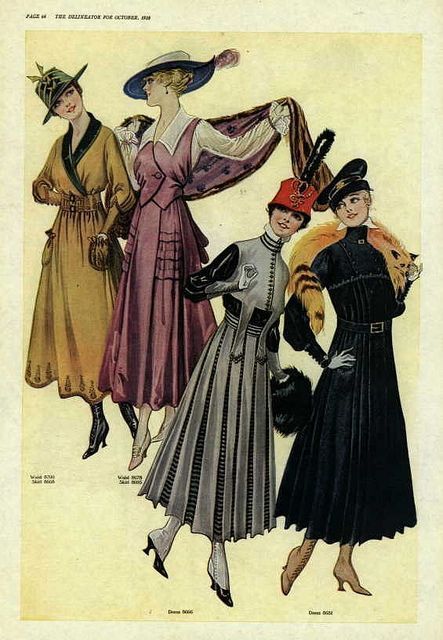
Clothing became more sensible. Gone were the restricting undergarments of past eras. Clothing was more tailored and most significantly, hemlines rose to several inches above the ankle.
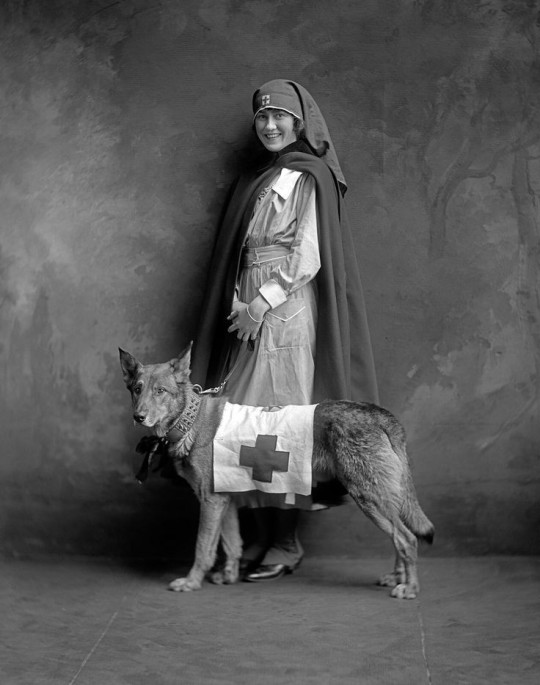
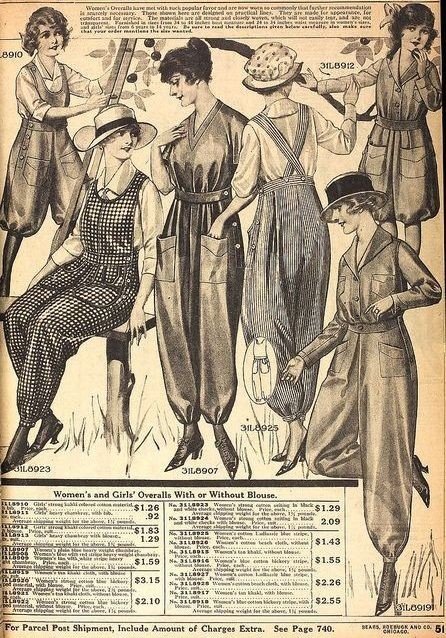
In Britain women joined the Voluntary Aid Detachment and Queen Alexandra’s Royal Army Nursing Corps. In the USA, the Marine Corps Women’s Reserve, and the special women’s battalions on the Russian Front.
In rural areas women were called to duty to perform an assortment of farm work and chores that had been previously done by the men who went to war. In the image on the right, a catalog page displays styles of overalls and briches particularly suited to outdoor work.
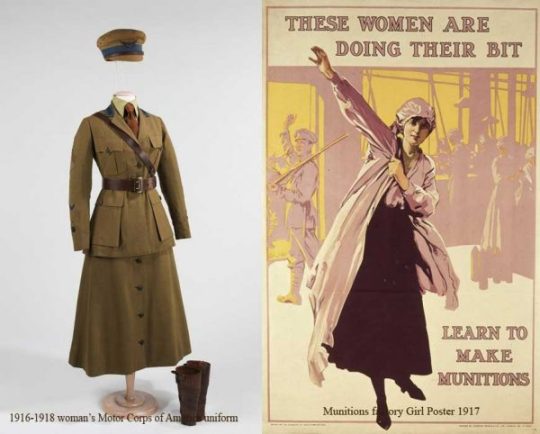
Above are two very different roles that women took during WW I. The Women's Motor Corps of the American Red Cross was largely made up of wealthy women who had the means of access to an automobile and learned to drive. The munitions factory girls on the other hand, worked at physically demanding, dangerous work and likely came from modest means. The latter were called "Canary Girls" because the exposure to TNT caused a yellowing of the skin. They faced not only safety but also health hazards, for very low wages.


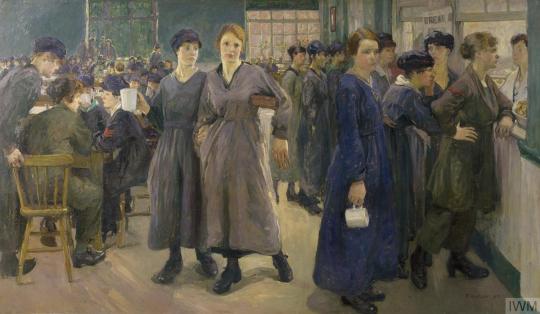
Flora Lion (British/English, 1878-1958) • Women's Canteen at Phoenix Works, Bradford, England • 1918
Flora Lion, an established society portrait artist, was commissioned by the Ministry of Information to complete two large paintings showing factory scenes during the First World War.
Stay tuned for Part II...
Sources: French History Podcast, Imperial War Museum, Wikipedia, American Red Cross, BBC.com
#fashion history#women's history#ww 1 history#canary girls#history of workers#1910s photography#american red cross#imperial war museum#the resplendent outfit blog#flora lion#woman artist#war artist
14 notes
·
View notes